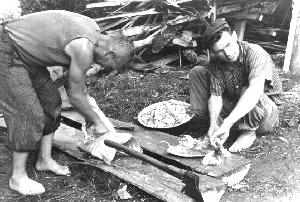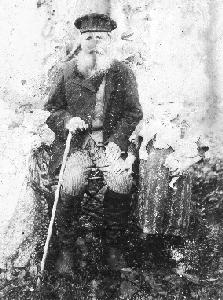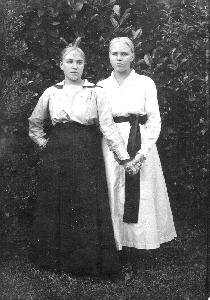Funeral customs of Caucasian estonians
 |
 |
 |
| Photo 4. |
Photo 5. |
Photo 6. |
Photos:
- Photo 4.
- Men chopping meat for the funeral feast, Sulevi village, 1950. It was men's job to procure the coffin and meat.
- Photo 5.
- Anette Angelstok with her grandfather in the village of Sulevi, about 1904. "The pipe and the walking-stick were put in my mother-father's coffin. I was 5 or 6 then. I used to go to him, and he would say, `Child, be good now, put my hands on breast and go home, and tell your Ma to come here after a while.'
(Angelstok 1986)
- Photo 6.
- Anette Angelstok's confirmation dress is girded with a black sash, because of her mother's death. About 1919 in the village of Sulevi. `Mother was dressed in a light blue jacket and grey skirt. Mother never liked that silk jacket. I even thought that she would appear in my dreams with this silk jacket.'
(Angelstok 1986).





